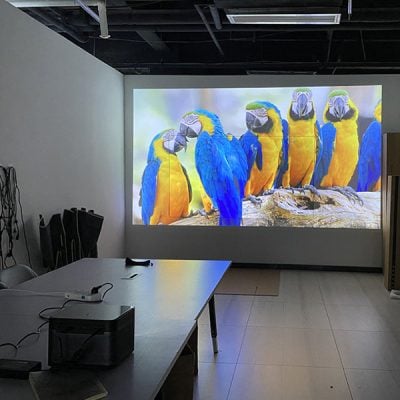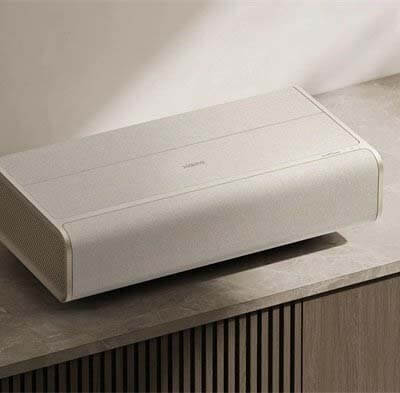The Dangbei D6X series, launched by the brand this year, is a flagship product boasting a variety of features, including the versatile Dynamic Screen function. Not only can it be used independently, but it also allows for seamless interaction between screens, catering to a wide range of user needs. Users might be puzzled when choosing between the Dangbei D6X Pro and the Dangbei D6X. This article aims to compare the two projectors.

Brightness
The Dangbei D6X Pro utilizes ALPD laser light source technology, resulting in a clearer and more vivid picture with a higher brightness level of 1200 CVIA lumens, offering enhanced resistance to ambient light. On the other hand, the Dangbei D6X employs a tri-color laser, delivering vibrant colors with a brightness level of 720 CVIA lumens, suitable for everyday use. You can get through the Differences Between ALPD Laser and Tri-Color Laser Projectors.
Voice Control
The Dangbei D6X Pro supports far-field voice control, whereas the Dangbei D6X supports near-field voice control. Far-field voice control allows for hands-free operation from a distance without the need for a remote control, while near-field voice control requires users to hold down the remote control and speak into the projector.
Smart Features
Both projectors support automatic focus and real-time automatic keystone correction. However, the Dangbei D6X Pro includes additional smart features such as obstacle avoidance and automatic screen insertion, making it more suitable for complex projection environments.

Wireless Connectivity
The Dangbei D6X Pro offers Wi-Fi 6 connectivity, providing theoretical speeds nearly three times faster than WiFi-5 for smoother wireless networking. In contrast, the Dangbei D6X supports Wi-Fi 5, ensuring stable wireless connectivity.
In addition to the above differences, both projectors are equipped with the MT9669 chip and feature 3GB of RAM and 32GB of storage space. They are lightweight and portable, making them convenient for travel. They also come with a Dynamic Stand and Dynamic Screen, supporting multi-angle projection. The Dynamic Screen offers various interactive functions, allowing users to use it as a smart speaker, electronic creative platform, and more, as well as control the big screen through the small screen.
Furthermore, both the Dangbei D6X Pro and the Dangbei D6X support the latest Dangbei OS 4.1 system, featuring modular dynamic widgets. Users can preset a variety of usage scenarios, such as night mode, automatic child mode at startup, and sleep mode, and customize commands through preset conditions and commands. The system also supports features such as ad-free screen casting, meditation space, and remote control retrieval, offering a diverse large-screen user experience.
In terms of overall configuration, the Dangbei D6X Pro offers stronger performance and richer functionality. For users looking to experience intelligent usage firsthand, the Dangbei D6X Pro is the preferred choice. However, for those with budget constraints who still want to experience the unique features of dual screens, the Dangbei D6X offers excellent value for money.
Related Reading:
Dangbei D6X Pro Review: Embracing the Era of Projection Interaction 3.0




